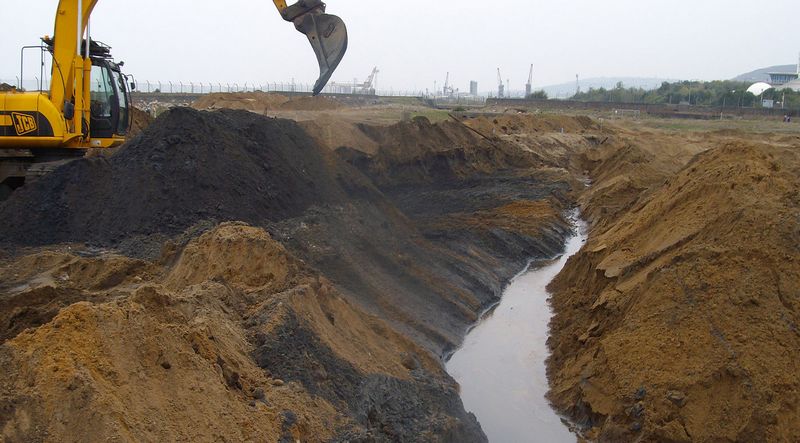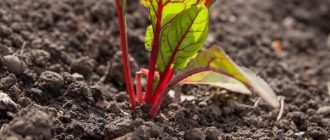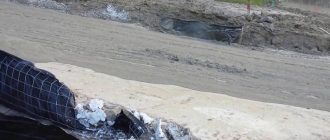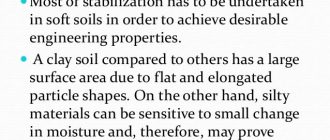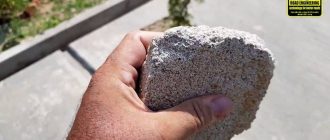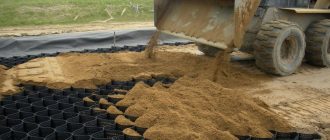
What is Soil Remediation?
Soil is a vital component of our environment, providing a medium for plant growth and acting as a natural filter for water and nutrients. However, over time, soil can become contaminated due to various human activities, such as industrial processes, improper waste disposal, and agricultural practices. This pollution and contamination can have detrimental effects on the ecosystem and human health.
Remediation is the process of treating contaminated soil to remove or neutralize the pollutants, restoring its natural properties and functions. It involves a comprehensive approach that takes into account the type and extent of contamination, the characteristics of the soil, and the desired end-use of the remediated land.
There are various techniques available for soil remediation, each with its advantages and limitations. Physical methods, such as excavation and landfilling, involve the removal and disposal of the contaminated soil. Chemical methods, such as soil washing and chemical oxidation, utilize chemical agents to break down or remove the pollutants. Biological methods, such as bioremediation and phytoremediation, rely on microorganisms or plants to degrade or absorb the contaminants.
Regardless of the method used, the goal of soil remediation is to restore the contaminated land to a condition that is safe for human and ecosystem health. This process requires careful planning, monitoring, and implementation to ensure the effective and sustainable cleanup of the site. By understanding the process of soil remediation, we can take steps towards restoring our environment and preventing further pollution.
Importance of Soil Remediation
Soil remediation is a crucial process in the treatment of soil contamination. Contaminated soil refers to soil that contains hazardous substances or pollutants, such as heavy metals, chemicals, or toxins, which can pose significant threats to human health and the environment.
The importance of soil remediation lies in its ability to mitigate the negative impacts of soil contamination. When soil is contaminated, it can negatively affect the surrounding ecosystem, including plants, animals, and even water sources. Soil toxicity can also be detrimental to human health, as it can lead to the contamination of crops or groundwater, resulting in the consumption of harmful substances.
Soil remediation plays a crucial role in the cleanup and restoration of polluted soil. It involves the removal, treatment, or containment of contaminants to reduce their concentration and mitigate their harmful effects. This process helps to improve soil quality, restore ecological balance, and protect human health.
Furthermore, soil remediation is essential for the proper management of waste, as contaminated soil is considered hazardous waste. By effectively treating contaminated soil, it minimizes the potential risks associated with waste disposal and prevents further pollution.
Benefits of Soil Remediation:
- Protects human health by reducing exposure to harmful substances.
- Preserves the quality of soil, ensuring its fertility for agriculture and vegetation growth.
- Restores the balance of ecosystems, promoting biodiversity and enhancing natural habitats.
- Prevents further pollution by effectively managing and treating hazardous waste.
- Supports sustainable development by safeguarding natural resources and promoting environmental sustainability.
Overall, the importance of soil remediation cannot be understated. It is a fundamental process in addressing soil pollution and safeguarding the environment. By effectively treating and managing contaminated soil, we can protect human health, preserve ecosystems, and support sustainable development for future generations.
Factors Affecting Soil Contamination Levels
Soil contamination is a significant environmental issue that can have detrimental effects on ecosystems and human health. Various factors can contribute to the level of soil contamination, including:
- Pollution sources: Industrial activities, agricultural practices, improper waste disposal, and accidental spills are some of the major sources of soil contamination. The type and quantity of pollutants released into the environment directly affect the contamination levels in soil.
- Contaminant properties: The properties of contaminants, such as toxicity, persistence, and mobility, determine the extent of soil contamination. Highly toxic substances can have a severe impact on soil and the organisms living in it, while persistent contaminants can remain in the soil for a long time, leading to prolonged contamination.
- Soil characteristics: The composition, texture, and pH level of the soil can influence its susceptibility to contamination. Some soils have a higher capacity to retain contaminants, while others may be more prone to leaching and allowing contaminants to spread.
- Environmental conditions: Factors like temperature, precipitation, and wind patterns can affect the movement and fate of contaminants in the soil. For example, heavy rainfall can lead to the leaching of pollutants into groundwater, while high temperatures may facilitate the volatilization of certain contaminants.
- Land use and management practices: The way land is utilized and managed can significantly impact soil contamination levels. Improper agricultural practices, such as excessive use of pesticides and fertilizers, can result in elevated contamination levels. Similarly, industrial sites that lack proper waste management systems can contribute to soil pollution.
Understanding these factors is crucial when developing strategies for soil restoration and remediation. Effective treatment methods and remediation techniques should be tailored to address the specific contaminants and conditions present in the soil to ensure successful cleanup and environmental protection.
Methods of Soil Contamination Assessment
Soil contamination assessment is an essential step in the process of soil remediation, as it helps determine the extent and severity of pollution in the soil. Various methods are used to assess soil contamination, including:
- Site Inspection: This involves a visual inspection of the site to identify any potential sources of contamination and to assess the overall condition of the soil.
- Sampling and Analysis: Soil samples are collected from different areas of the site and analyzed in a laboratory to determine the presence and concentration of contaminants.
- Physical Testing: Various physical tests, such as soil pH, texture, and moisture content, are conducted to assess the physical properties of the soil and identify any abnormalities that may indicate contamination.
- Chemical Testing: Chemical tests, such as leaching tests and extractions, are performed to determine the mobility and availability of contaminants in the soil.
- Biological Testing: Biological tests, such as bioassays and microbial analyses, are used to assess the impact of contamination on soil organisms and determine the potential risks to the ecosystem.
These assessment methods help in understanding the nature and extent of soil contamination and provide valuable information for the selection of appropriate remediation methods. The data collected through these methods is used to develop a remediation plan and to monitor the progress and effectiveness of the soil cleanup and restoration process.
Identification of Contaminants in Soil
Before embarking on the soil remediation process, it is crucial to identify and understand the contaminants present in the soil. This step is essential to determine an appropriate treatment plan and ensure the effective restoration of the soil.
Contaminants in soil can originate from various sources, such as industrial activities, improper waste disposal, agricultural practices, or accidental spills. These contaminants can pose risks to the environment and human health due to their toxicity and potential for spreading and causing pollution.
The identification of contaminants involves a comprehensive analysis of the soil, including physical, chemical, and biological assessments. The following steps are typically followed:
- Sampling: Soil samples are collected from different areas of the site to obtain representative data. This sampling can be done through various methods, such as grab sampling or soil coring.
- Laboratory Testing: The collected soil samples are sent to a laboratory for analysis. The laboratory tests can include physical tests, such as texture and moisture content determination, as well as chemical tests to identify the presence and concentration of contaminants.
- Contaminant Analysis: The laboratory analyzes the soil samples for specific contaminants, such as heavy metals, petroleum hydrocarbons, pesticides, or volatile organic compounds (VOCs). The results of these tests provide information about the type and level of contamination present in the soil.
- Risk Assessment: Based on the results of the laboratory analysis, a risk assessment is conducted to evaluate the potential threats posed by the identified contaminants. This assessment considers factors such as toxicity, persistence, mobility, and the potential for bioaccumulation in the food chain.
Once the contaminants are identified and their risks assessed, an appropriate treatment plan can be developed for soil remediation. The selected remediation techniques will depend on the specific contaminants and the site conditions, aiming to reduce or eliminate the contamination and restore the soil to its original state.
Overall, the identification of contaminants in soil is a crucial step in the remediation process. It provides essential information for the development of an effective treatment plan and ensures the successful restoration of the contaminated soil.
Soil Sampling Techniques
Accurate soil sampling is a crucial step in the process of soil remediation. By collecting representative samples from contaminated areas, environmental experts can to assess the nature and extent of pollution, determine the appropriate treatment methods, and monitor the effectiveness of remediation efforts. Various techniques and tools are used for soil sampling, each designed to collect samples that accurately reflect the characteristics of the soil being tested.
1. Grab Sampling: This is the simplest method of soil sampling, where a sample is obtained by hand using a stainless-steel scoop or trowel. Grab sampling is commonly used when quick and small-scale assessments are needed, such as in initial site investigations or for screening purposes. However, this method may not provide a representative sample since contamination in soil can be non-uniformly distributed.
2. Random Sampling: Random soil sampling involves the collection of samples from various locations within a contaminated area, ensuring a wide coverage and a representative sample. This method is particularly useful when there is uncertainty about the distribution of contamination. Random sampling is often done using a grid pattern to select sampling points systematically.
3. Composite Sampling: Composite sampling involves the collection of multiple soil samples from different locations within a contaminated area, which are then combined into a composite sample for analysis. This technique is commonly used to reduce laboratory testing costs and is suitable when the contamination is expected to be uniformly distributed. However, composite sampling may not accurately reflect localized hotspots of contamination.
4. Incremental Sampling: Incremental sampling is a systematic method of collecting multiple soil samples at the same location, at different depths. By collecting samples incrementally, from surface to subsurface, the vertical distribution of contamination can be assessed. This technique is particularly important when investigating the depth and extent of pollution in the soil.
5. Geophysical Techniques: Geophysical methods, such as electromagnetic induction or ground-penetrating radar, can be used to obtain information about soil contamination without physically disturbing the soil. These techniques allow for rapid and non-invasive assessment of contamination, helping to guide the planning and execution of soil sampling activities.
Regardless of the technique used, it is important to follow established protocols for soil sampling to ensure accuracy and reliability of the results. Properly collected and analyzed soil samples provide valuable information for the design and implementation of effective soil remediation strategies, ultimately leading to the restoration of contaminated sites and the protection of human health and the environment.
Remediation Technologies for Soil Contamination
Soil contamination is a significant environmental issue that occurs when soil is polluted with hazardous substances. The presence of contaminants can have detrimental effects on the environment, human health, and ecosystems. Various remediation technologies have been developed to restore contaminated soil and address the pollution problem. These technologies aim to remove, treat, or immobilize the contaminants to reduce their toxicity and restore the soil to its natural state.
1. Excavation and removal: This is one of the most common soil remediation technologies. It involves the physical removal of contaminated soil from the site. Excavation and removal are typically used for localized contamination and can be effective in cases where the contamination is shallow.
2. Bioremediation: Bioremediation utilizes microorganisms to degrade or transform contaminants in soil into less harmful substances. Microorganisms break down organic contaminants through processes such as biodegradation, bioaccumulation, and bioconversion. This method is cost-effective and environmentally friendly, as it utilizes natural processes.
3. Chemical oxidation: Chemical oxidation is used to remediate soil contaminated with organic compounds. This technique involves the application of chemical oxidants, such as hydrogen peroxide or potassium permanganate, to the contaminated area. The oxidants react with the contaminants, breaking them down into less toxic byproducts.
4. Soil vapor extraction: Soil vapor extraction involves the removal of volatile contaminants from the soil through a vacuum system. This technique works by increasing the pressure difference between the soil and extraction devices, causing the contaminants to volatilize and be captured. Soil vapor extraction is often used to remediate petroleum hydrocarbon-contaminated soil.
5. Thermal treatment: Thermal treatment technologies, such as incineration and thermal desorption, use high temperatures to destroy or volatilize contaminants. The heat breaks down the contaminants into gases or solids, which can then be captured and treated. Thermal treatment is effective for soil contaminated with hazardous chemicals and can achieve high remediation rates.
6. Stabilization and solidification: Stabilization and solidification techniques involve the addition of binding agents to contaminated soil to reduce the mobility and toxicity of contaminants. This method aims to immobilize the contaminants, preventing them from leaching into the environment. Common binding agents include Portland cement, fly ash, and lime.
7. Phytoremediation: Phytoremediation is an innovative and environmentally friendly remediation technique that utilizes plants to remove, degrade, or immobilize contaminants in soil. Plants either accumulate contaminants in their tissues or release compounds that break down the contaminants. This method is often used for low-level contamination and is effective in treating heavy metals and organic pollutants.
These are just a few examples of the many remediation technologies available for soil contamination cleanup and restoration. The choice of technology depends on various factors, such as the type and extent of contamination, site conditions, and cost-effectiveness. By applying appropriate remediation technologies, the negative impacts of soil contamination can be mitigated, allowing for the restoration of healthy and sustainable ecosystems.
Physical Soil Remediation Methods
In order to address soil contamination and restore its quality, various physical soil remediation methods can be employed. These methods involve the physical removal or treatment of the contaminated soil to reduce toxicity and restore its natural state.
- Excavation and Removal: This method involves digging up the contaminated soil and physically removing it from the site. The excavated soil is then transported to a designated waste treatment facility where it can be properly treated or disposed of.
- Soil Vapor Extraction: Soil vapor extraction is a technique used to treat soil contamination caused by volatile organic compounds (VOCs). It involves the removal of VOCs from the soil by applying a vacuum to extract vapors. This method can be effective in treating soil pollution caused by industrial activities or underground fuel storage.
- Thermal Desorption: Thermal desorption is a remediation technique that utilizes heat to remove contaminants from the soil. By applying high temperatures, contaminants are vaporized, and the resulting gases can be collected and treated separately. This method is particularly useful for treating soil contaminated with organic compounds.
- Chemical Oxidation: Chemical oxidation is a process that involves the application of oxidizing agents to neutralize or break down contaminants in the soil. This method can effectively treat soil contamination caused by organic compounds and is often used in conjunction with other remediation techniques.
- Soil Washing: Soil washing is a process that uses water or other solutions to remove contaminants from the soil. The contaminated soil is mixed with a liquid solution and then separated through a series of physical and chemical processes. This method is commonly used to treat soil contaminated with heavy metals and hydrocarbons.
These physical soil remediation methods can play a crucial role in the restoration of contaminated soil. Each method is suited to different types of contamination and may be used alone or in combination to achieve the desired results.
Chemical Soil Remediation Methods
Chemical soil remediation methods involve using chemical processes to treat soil pollution, toxicity, and other forms of contamination. These methods aim to restore and rehabilitate the soil to its natural state, reducing the risks associated with contaminated soil and protecting human health and the environment.
There are several chemical soil remediation methods that can be used, depending on the type and extent of contamination. Some of the commonly used methods include:
- Chemical Oxidation: This method involves using chemical oxidants to break down and convert pollutants into less toxic or non-toxic compounds. Oxidants such as hydrogen peroxide, ozone, and permanganate are commonly used in this process.
- Chemical Reduction: Chemical reduction involves using reducing agents to convert toxic pollutants into less harmful forms. Common reducing agents used in this process include zero-valent metal compounds like iron and sulfide compounds.
- Chemical Stabilization: In this method, chemicals are added to the contaminated soil to immobilize or stabilize the pollutants. The chemicals form bonds with the pollutants, preventing them from leaching into groundwater or being taken up by plants.
- Chemical Extraction: Chemical extraction involves the use of solvents or chemicals to remove or extract contaminants from the soil. This method is often used for soil contaminated with organic compounds or heavy metals.
- Chemical Precipitation: Chemical precipitation is used to remove contaminants from soil by forming insoluble precipitates. Chemicals such as lime or phosphate are added to the soil, causing the contaminants to precipitate and separate from the soil.
It is important to note that chemical soil remediation methods should be carefully planned and implemented to ensure effectiveness and minimize potential harm to the environment. Proper monitoring and assessment of the soil, as well as the selection of appropriate chemicals and techniques, are crucial for successful remediation and restoration of contaminated soil.
In conclusion, chemical soil remediation methods offer effective solutions for treating soil contamination and restoring the quality of soil. These methods play a significant role in protecting human health and the environment from the harmful effects of soil pollution.
Biological Soil Remediation Methods
Biological soil remediation methods involve the use of living organisms to treat and restore contaminated soil. These methods utilize the natural ability of certain organisms to degrade or transform harmful substances present in the soil, ultimately cleaning up the contamination and restoring the soil to its original state.
1. Bioremediation: Bioremediation is a common biological soil remediation method that utilizes microorganisms such as bacteria, fungi, and algae to break down toxic pollutants into less harmful substances. These microorganisms can use the contaminants as a food source, converting them into carbon dioxide, water, and harmless byproducts. Bioremediation can be conducted in situ, where the treatment is applied directly to the contaminated soil, or ex situ, where the contaminated soil is removed and treated at a separate location.
2. Phytoremediation: Phytoremediation is another effective biological soil remediation method that involves the use of plants to remove, degrade, or stabilize contaminants in the soil. Plants can absorb pollutants through their roots and accumulate them in their tissues, effectively removing the contaminants from the soil. Some plants have the ability to break down or transform toxic substances, while others can immobilize contaminants, preventing them from spreading further. Phytoremediation is a sustainable and cost-effective method that can be used for the treatment of various pollutants, including heavy metals, organic compounds, and pesticides.
3. Mycoremediation: Mycoremediation is a specialized form of bioremediation that utilizes fungi to clean up contaminated soil. Certain species of fungi have the ability to break down a wide range of contaminants, including petroleum hydrocarbons, pesticides, and industrial chemicals. Fungi secrete enzymes that can degrade the pollutants, converting them into simpler compounds that are less harmful to the environment. Mycoremediation can be an effective method for the treatment of soil contaminated with persistent organic pollutants.
4. Composting: Composting is a natural process that involves the decomposition of organic waste materials, such as food scraps, yard waste, and agricultural residues, into a nutrient-rich soil amendment called compost. This biological soil remediation method can also be used to treat contaminated soil. Contaminated soil can be mixed with organic materials and subjected to controlled conditions to encourage the activity of microorganisms responsible for decomposition. Over time, the microorganisms break down the contaminants, resulting in a clean and nutrient-rich soil that can support plant growth.
5. Bioaugmentation: Bioaugmentation is a technique that involves the introduction of specific microorganisms into the contaminated soil to enhance the degradation of pollutants. This method is often used in conjunction with other biological soil remediation methods to improve their effectiveness. The introduced microorganisms can be selected for their ability to degrade specific contaminants, thereby accelerating the cleanup process. Bioaugmentation can be used for the treatment of a wide range of contaminants, including petroleum hydrocarbons, chlorinated solvents, and heavy metals.
| 1. Environmentally friendly |
| 2. Cost-effective |
| 3. Can be applied to large areas |
| 4. Sustainable |
| 5. Does not require extensive excavation or disturbance of the soil |
Biological soil remediation methods offer an effective and environmentally friendly approach to the cleanup and restoration of contaminated soil. These methods can be tailored to the specific contaminants and conditions present at a site, ensuring optimal results. By harnessing the power of nature, biological soil remediation methods provide a sustainable solution to soil pollution and contribute to the overall health of ecosystems.
Monitoring and Evaluation of Soil Remediation Process
Monitoring and evaluation are essential components of the soil remediation process. They involve the continuous assessment and measurement of various parameters to ensure the effectiveness of the remediation treatment and the successful restoration of contaminated soil.
Pollution Assessment: The first step in monitoring and evaluation is to conduct a comprehensive pollution assessment of the soil. This involves taking samples from different locations and analyzing them for the presence of pollutants, such as heavy metals, organic compounds, and other contaminants.
Soil Testing: Soil testing is a crucial part of the monitoring process. It helps to identify the extent and severity of contamination, as well as determine the appropriate remediation techniques and treatment options. Various tests, such as pH testing, nutrient analysis, and toxicity testing, are conducted to gather necessary information about the soil condition.
Monitoring Parameters: During the remediation process, it is crucial to continuously monitor various parameters to ensure that the treatment is working as intended. These parameters may include soil moisture content, temperature, pH levels, nutrient levels, and the concentration of contaminants in the soil.
Sampling and Analysis: Sampling and analysis are performed at regular intervals to assess the progress of soil remediation. Samples are taken from different locations and analyzed in a laboratory to determine the concentration of contaminants and the effectiveness of the treatment. This information is used to adjust the remediation process if necessary.
Evaluation of Treatment Efficiency: The evaluation of treatment efficiency involves comparing the results of pre- and post-remediation soil testing to determine the effectiveness of the treatment. It helps assess the reduction in contaminant levels and the overall success of the remediation process.
Long-Term Monitoring: Even after the completion of soil remediation, long-term monitoring is necessary to ensure that the contamination does not reoccur. Regular monitoring helps detect any potential recontamination and allows for prompt action to prevent further damage to the environment.
| Soil Sampling | Collecting soil samples from different locations for laboratory analysis. |
| Chemical Analysis | Conducting tests to determine the concentration of contaminants in the soil. |
| Physical Measurements | Monitoring parameters such as soil moisture content, temperature, and pH levels. |
| Comparison and Evaluation | Comparing pre- and post-remediation data to evaluate the effectiveness of the treatment. |
| Long-Term Monitoring | Continued monitoring to prevent recontamination and ensure the sustainability of the remediation process. |
In conclusion, monitoring and evaluation play a crucial role in the soil remediation process. They help assess contamination levels, determine treatment options, monitor treatment effectiveness, and ensure the long-term success of restoration efforts. By continuously monitoring and evaluating the process, we can effectively remediate polluted soils and restore them to their natural state.
Q&A:
What is soil remediation?
Soil remediation is the process of removing pollutants from soil and restoring it to a healthy state.
Why is soil remediation important?
Soil remediation is important because contaminated soil can pose serious health and environmental risks. It is necessary to remove pollutants and restore the soil’s natural quality.
What are the different methods of soil remediation?
There are several methods of soil remediation, including excavation and removal, soil washing, bioremediation, thermal desorption, and chemical treatment. Each method is suited for different types of contaminants and soil conditions.
How long does the soil remediation process usually take?
The duration of the soil remediation process depends on various factors, such as the extent of contamination, the chosen remediation method, and the size of the site. It can range from a few weeks to several months or even years.
Does soil remediation always guarantee a complete clean-up of contaminated soil?
No, soil remediation does not always guarantee a complete clean-up of contaminated soil. The effectiveness of the remediation process depends on the specific contaminants present and the chosen remediation method. In some cases, residual contamination may remain even after remediation efforts.
What is soil remediation?
Soil remediation is the process of cleaning up and restoring contaminated soil to a safe and healthy condition.

